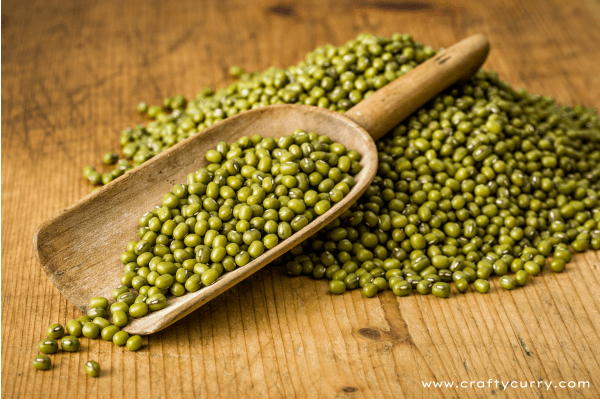
Did You Know?
Mung dal, also known as split mung beans, is one of the easiest legumes to digest and has been a staple in Indian and Asian cuisines for centuries. It is often used in Ayurvedic diets due to its ability to balance all three doshas—Vata, Pitta, and Kapha. Not only is it packed with protein, but it also provides a powerhouse of nutrients that support overall health. Plus, mung dal sprouts are considered a superfood!
Origin & History
Mung dal traces its roots back to India and has been cultivated for thousands of years. Ancient Ayurvedic texts reference mung beans as a healing food, particularly for digestive health. Over time, it spread to China, Southeast Asia, and the Middle East, becoming a key ingredient in various culinary traditions. Today, it remains a staple in vegetarian and plant-based diets worldwide.
Nutritional & Health Benefits
Mung dal is a nutrient-dense food, offering a range of health benefits:
- Rich in Protein: Excellent plant-based protein source, ideal for vegetarians and vegans.
- High in Fiber: Supports digestion and gut health, helping prevent constipation.
- Packed with Antioxidants: Contains flavonoids and phenolic acids that help fight inflammation.
- Regulates Blood Sugar: Low glycemic index makes it a great option for people with diabetes.
- Heart-Healthy: Helps lower bad cholesterol (LDL) and supports cardiovascular health.
- Weight Management: Keeps you full for longer, reducing unnecessary cravings.
Culinary Uses & Flavor Profile
Mung dal has a mild, slightly sweet, and nutty flavor, making it versatile in both savory and sweet dishes. It is widely used in:
- Soups & Stews: Common in Indian dals (lentil soups) and Thai curries.
- Khichdi: A nutritious porridge-like dish cooked with rice and spices.
- Dosa & Chilla: Used to make protein-packed pancakes.
- Desserts: Used in Asian sweet dishes like moong dal halwa.
- Sprouts: Mung dal sprouts are used in salads, stir-fries, and wraps for a crunchy, nutritious boost.
Processing & Forms
Mung dal comes in different forms, each with unique culinary applications:
- Whole Mung Beans: Green in color, used in soups and sprouting.
- Split Mung Dal (With Skin): Yellow with a hint of green, retains more fiber.
- Split & Skinned Mung Dal: Completely yellow, cooks faster and is easily digestible.
- Mung Dal Flour: Used to make gluten-free breads and batters.
Skincare & Beauty Applications
Mung dal isn’t just great for eating—it’s also beneficial for skin!
- Natural Exfoliant: When ground into a paste, it gently scrubs away dead skin cells.
- Brightens Skin: Mixed with milk or yogurt, it helps lighten dark spots and adds glow.
- Oil Control: Used in face packs to absorb excess oil and prevent acne.
Fun Facts & Myths
–Myth: Mung dal is difficult to digest. Truth: It is one of the lightest and easiest dals to digest!
–Fact: Sprouted mung dal contains more Vitamin C and antioxidants than its cooked form.
–Fact: In many cultures, mung dal is used as a home remedy for fevers and colds due to its cooling properties.
Mung dal is truly a super ingredient that not only nourishes your body but also offers multiple uses beyond the kitchen. So next time you cook with it, remember—you’re adding centuries of nutrition and tradition to your plate!

